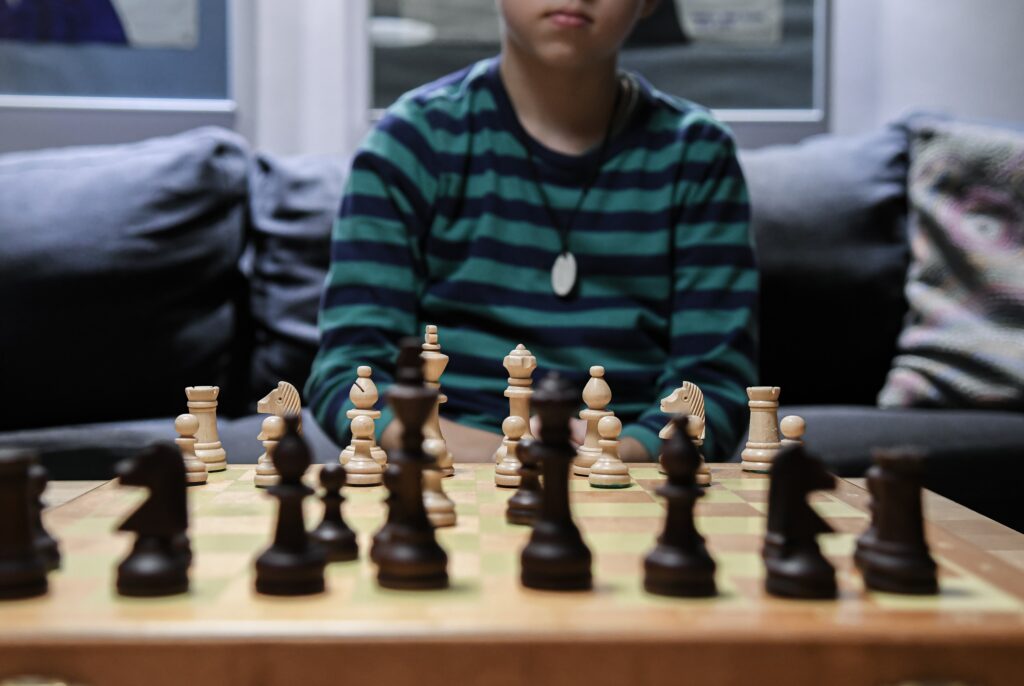“WEREWORDS: A Hidden Role Game with Expansive Vocabulary” is an engaging board game that combines strategic thinking, wordplay, and deduction skills. In Werewords, players are assigned hidden roles as either villagers or werewolves and work together to uncover a secret word chosen by the mayor. However, not everyone’s objectives are the same. Villagers must either guess the word or identify the werewolf, while the werewolf aims to prevent the word from being guessed and discover the seer’s identity. The game revolves around asking yes or no questions to the mayor and using tokens to navigate towards the correct word. With its captivating gameplay and suspenseful twists, Werewords offers a thrilling and endlessly entertaining experience for players aged 8 and above.

Overview of Werewords
Werewords is a game that combines expansive vocabulary, knowing your friends’ minds, and backstabbing to create a thrilling and strategic gaming experience. The game revolves around three main groups: the mayor, the villagers, and the werewolves. Each player is assigned a hidden role, and their objective will depend on which team they are secretly aligned with.
There are multiple objectives in Werewords, depending on the player’s role. If you are a villager, your objective is to either correctly guess the word being played or correctly identify who the werewolf is. On the other hand, if you are the werewolf, you want to prevent the guessing of the word and avoid getting caught, or you can try to guess who the seer is.
The mayor’s role is known to all players, but their true allegiance remains a secret. If the mayor is a villager, they must guide the other players towards the correct word so that it can be guessed. However, if the mayor is a werewolf, they will try to mislead the villagers and steer them away from the word, even resorting to lying and deception. The werewolf must be careful not to make their intentions too obvious, as they risk being exposed and caught.
Setup
To set up a game of Werewords, the mayor, seer, and werewolf cards are removed from the box. The number of villager cards used will depend on the number of players, with one additional villager card added. These cards are shuffled and placed in front of each player, with the remaining card placed in the middle of the table for the mayor.
The mayor reveals their card and takes on the secret role in the middle of the table. Tokens such as yes/no tokens, maybe tokens, correct token, and so close token are placed in front of the mayor, along with a mobile device with the app downloaded. The app will be used to guide and facilitate the gameplay.

Gameplay
The gameplay in Werewords is divided into two phases: the night phase and the day phase.
Night Phase
During the night phase, all players close their eyes as directed by the app. The mayor selects their secret role and chooses the word that will be guessed in the game. The seer then opens their eyes and gets to see the chosen word, followed by the werewolf. Afterward, everyone opens their eyes, and the day phase begins.
Day Phase
The day phase is timed, with a duration of 4 minutes. Players can now ask the mayor questions to gather clues about the word. The mayor has the freedom to distribute tokens to answer the questions as they see fit. The goal is to deduce the hidden word within the given time limit. Players must phrase their guesses as questions, such as “Is the word dresser?”
If the timer runs out, the villagers can no longer guess the word, although they can still win the game using other means. Similarly, if the mayor runs out of yes/no tokens, the guessing phase comes to an end. The villagers can only win if they correctly guess the word or identify the werewolf.
End of Game
The end conditions and winning conditions differ for the villagers and the werewolves.
Villagers Winning Conditions
The villagers can achieve victory in two ways. Firstly, if they can correctly guess the word before the timer runs out, they win the game. Secondly, if the word remains unguessed, they can attempt to identify the player who is the werewolf. After the timer runs out, the players have a brief moment to discuss, followed by a countdown. At the end of the countdown, each player chooses a player they suspect to be the werewolf by pointing at them. The player with the most votes, or the tied players if there is a tie, reveals their card. If they are the werewolf, the villagers win.
Werewolves Winning Conditions
The werewolves can win the game if the word is not guessed in time and the villagers fail to identify the werewolf during the voting phase. Alternatively, if the word is guessed correctly, the werewolves have an opportunity to guess the seer’s identity. They have a moment to discuss, followed by a countdown. The player with the most votes, or the tied players if there is a tie, reveals their card. If they correctly identified the seer, the werewolves win.
Additional Roles
Werewords also introduces additional roles that can add complexity to the gameplay.
The Beholder
The beholder is an additional role who knows the identity of the seer but remains unaware of the hidden word. The beholder’s objective is to help the villagers without revealing their knowledge of the seer. The villagers can still win even if the werewolves correctly guess the beholder while searching for the seer.
The Minion
The minion is a role that knows the identity of the werewolf but not the hidden word. Unlike the beholder, if the minion is voted as a werewolf during the game, the villagers still win. The minion’s objective is to assist the werewolf while avoiding suspicion from other players.

Objective of Werewords
The objective of Werewords is for each player to complete their hidden agenda according to their assigned hidden role. Whether it be as a villager trying to correctly guess the word or identify the werewolf, or as a werewolf trying to deceive the villagers and avoid detection, players must strategize and use their vocabulary skills to achieve their objectives.
Number of Players
Werewords is designed for 4 to 10 players, allowing for a range of group sizes and dynamics. The game can accommodate both small gatherings and larger parties, making it versatile and suitable for various social settings.
Materials
To play Werewords, you will need several materials. These include:
- One card
- One Seer card
- Two Werewolf cards
- Seven Villager cards
- One Correct token
- One So Close token
- Ten Maybe tokens
- Thirty-six double-sided yes/no tokens
- A mobile device with the Werewords app downloaded
The cards and tokens are used to assign and represent the roles of each player, while the mobile device and app serve as a timer and facilitator for the game.
Type of Game
Werewords is classified as a hidden role game. Each player is assigned a secret role, and their abilities and objectives are specific to that role. The hidden aspect adds an element of mystery and intrigue to the gameplay, as players must navigate the dynamics of their team while concealing their true allegiance from others.
Audience
Werewords is suitable for players aged 8 and above. The game’s mechanics and complexity level make it accessible to a wide range of players, from families to casual gaming enthusiasts. The combination of wordplay, deduction, and social interaction ensures an engaging and entertaining experience for players of all ages.
In conclusion, Werewords offers a unique and strategic gameplay experience that revolves around expansive vocabulary, mind-reading, and subtle deception. With different objectives for each player, a range of additional roles, and dynamic gameplay mechanics, Werewords provides endless opportunities for fun and suspense. Whether you enjoy unraveling mysteries or testing your communication skills, Werewords is sure to captivate players and keep them on the edge of their seats.








